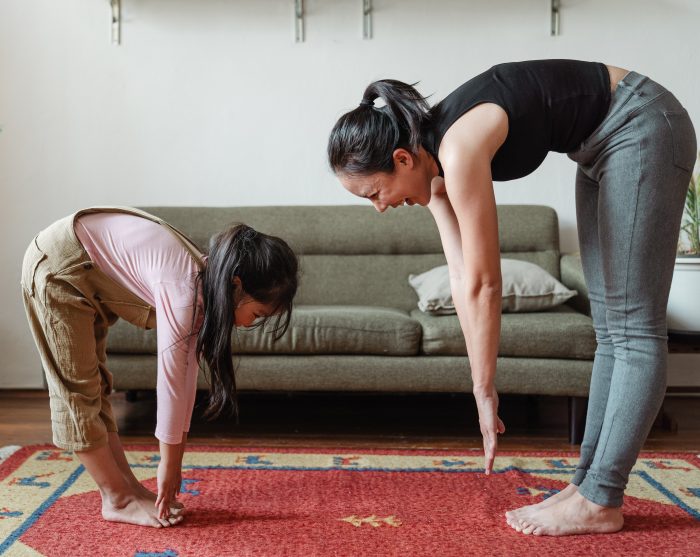When my 7-year-old daughter needed stitches yesterday, I got a new lesson on what it means to respect children’s bodily autonomy.
I have always subscribed to the idea that parents can unwittingly rob children of their own agency by exerting unnecessary control, and this can lead to undesirable feelings of disempowerment in adulthood.
My elementary-aged daughters don’t have to share physical affection with anyone if they don’t want to. They are not cajoled to sit on Santa’s lap. There are no forced hugs and kisses to relatives they have met a handful of times. I also do my best to let them have control over their appearance, like clothing, haircuts, and whether or not to pierce their ears. All of this, I hope, is what I consider to be my part in combatting rape culture and instilling them with a sense of accountability for their bodies that is their birthright.
There are a few scenarios when I throw my parental weight around, and those situations have to do with nutrition, school attendance, personal hygiene, and life or death situations. Having explained those basic ground rules, here’s what happened:
I had enjoyed a lovely Saturday with my girls. We had a slow morning, but then went hiking on a mountain trail 15 minutes from my house. I was impressed my older girl and her five-year-old sister had covered almost two miles with a “can-do” disposition. When we got home, we worked together to assemble a cherry pie with a pre-made crust and canned filling. When the pie was in the oven, I sent them to play while I cleaned up the kitchen. I was feeling smug about all the quality time we had and how I had kept everyone in my family (except my husband) away from screens all day.
Then, I heard a loud bump come from my younger girl’s bedroom followed by silence. I asked twice what was going on and got no answer. I was on my way down the hallway when my older girl quietly said, “You have to come in here.”
I arrived to find a wedge-shaped cubicle bookshelf broken on the floor. The shelf was comprised of six one-foot cube cubbies stacked on top of each other with three on the bottom, two in the middle, and one on top, and the side edge was in a stairstep pattern. I have told my girls dozens of times not to climb on this piece of furniture even though it looks like stairs, but they occasionally disregarded this advice, and it had finally broken.
My older girl was sitting on the bed and had a two-inch cut on the top of her right thigh that went through all the layers of her skin, undoubtedly from the sharp screw that had become exposed during the breakage of the shelf. The skin was gaping open a quarter of an inch. It was surprisingly not very bloody, but you could see the layer of subcutaneous connective tissue on top of her muscle, exactly like drawings in anatomy books. I immediately knew I wanted a professional opinion.
I quickly arranged to have my husband take the pie out of the oven when the timer went off and stay with my younger daughter at home. I scooped up my big girl, and we were on our way to my small town’s urgent care clinic. I had been able to calm her down on the ride there by telling stories of me getting stitches when I was about her age. I also explained how she could heal faster if we closed the wound and that we wanted to be sure it didn’t get infected. While I was doing intake at the clinic, she even played around a little bit in her wheelchair while still holding a paper towel over the cut.
The medical team flushed the wound with a saline solution, and we started talking about stitches versus staples versus glue. My girl had been adamant since the beginning that she did not want stitches, and unfortunately, that was the gold standard treatment in this case, because the wound was just large enough that glue would likely be inadequate and leave a bit of a gap between the edges of skin. Eventually, I bribed her to verbally agree to the stitches, but during the injection of the numbing medicine, her panic rose up to a level more visible than when the injury first happened. It took all of my body weight on the top half of her body and a nurse using all her strength on her legs to get the injections around the cut. My girl was screaming and begging us to stop the whole time, insisting stitches would be ugly.
I was hopeful that after the site went numb, she would have no issue with the stitches themselves. After all, that’s why we fought so hard to get those injections in. That’s not what happened, though. As soon as she saw the tiny, comma-shaped needle with a suture on the other end, she was again ready to fight and yell to the point of exhaustion. She’s unusually quick and strong, even for a kid (she’s one of the fastest kids in her second grade class), and I thought it would be unfair to ask the kind, grandmotherly nurse to exert the amount of energy it would take to restrain her. It also seemed like it would have been overkill to sedate her, because while this injury was horrific to me as a mother, the seasoned nurses had commented that the cut “wasn’t that deep.”
What am I teaching my daughter if I hold her down on a table to have something done to her body, that she clearly does not want, when there are reasonable alternatives? I’m no stranger to the uncomfortable anguish of forcing kids through medical procedures—her younger sister has cystic fibrosis, and we have endured our fair share of unpleasant, but very necessary, medical management.
After an exceedingly long time of panic on her behalf and my futile attempts to calm, rationalize, or beg her to let herself be helped, we relented and allowed her to have the wound glued shut and then reinforced with adhesive tape. She understood there’s a possibility that the scar could be bigger, and she did not care. She happily complied with the glue and tape procedure, as the site of injury was completely numb at this point. It was immediately apparent that it was not the meticulously neat suturing job I had envisioned for her. There were no antibiotics prescribed because the wound was cleaned, and pain medicine was discouraged and has actually not been necessary thus far. We are keeping an eye on it and I’m confident it will heal fine.
It should not matter to me, but the socially groomed part of me worries about the judgement I might be facing from the medical staff or the assumptions that will inevitably come from anyone who learns this story or sees the scar for the rest of her life. An overly simplistic narrative of this encounter is that she threw a fit and got what she wanted. Between her and I, though, I hope it has taught her that when I tell her she owns her body, I mean it in a way that is more than a mockery.
The worst case scenario is that if she grows to hate the scar as an adult, she can take advantage of what I assume will be amazing scar removal technologies that will exist when she is older.
On the ride home, I was in disbelief that reflecting back on how things unfolded, she actually thought the appointment went well and she liked how things turned out. There was no celebratory reward or fanfare for her afterward—we did, however, eat the pie.











Read 1 comment and reply